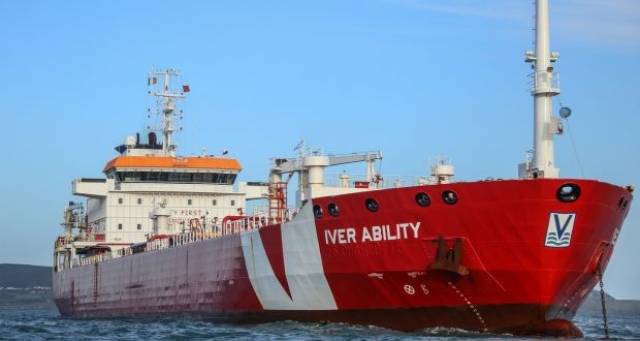#TankerDublinBay - Lorna Siggins of the Irish Times writes that seafarers are used to spending Christmas at sea, but one ship’s complement in Irish waters will have a more unusual experience than most.
Some 13 crew on board the 129-metre tanker Iver Ability as previously reported on Afloat, will be neither out of sight nor out of mind in Dublin Bay due to “issues” with unloading the ship’s cargo.
The red- and white-hulled vessel has already spent more than four months on the anchorage, apart from several brief forays into Dublin Port for supplies.
Illuminated at night, it has become a talking point for coastal walkers.
Managers of the Gibraltar-registered ship have confirmed that it was transferred on to the anchorage in August after it “experienced a reaction to its cargo of bitumen during cargo operations in the port”.
It is understood that a seal on its hatch ruptured while on berth in Dublin Port, and posed a potential safety hazard.
The ship’s owners say that the situation has “stabilised”, with “no further pressure release of the cargo occurring”, and that they have been conducting a “full investigation”.
For more click here noting that further in the report, it was mentioned Iver Ability was in Dublin Port this week to take on supplies and also during Storm Barbara to await subsiding winds.
Afloat.ie can confirm as of this morning the tanker has departed from the Deepwater Quay with assistance of tug Beaufort, before heading under way for yet another anchorage and notably to be spent over Christmas.

























